
William Edward Burghardt Du Bois was an American sociologist, socialist, historian, and Pan-Africanist civil rights activist.
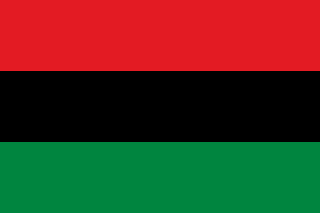
Garveyism is an aspect of black nationalism that refers to the economic, racial and political policies of UNIA-ACL founder Marcus Garvey.
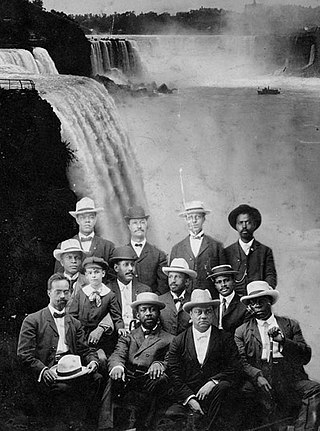
The Niagara Movement (NM) was a civil rights organization founded in 1905 by a group of activists—many of whom were among the vanguard of African-American lawyers in the United States—led by W. E. B. Du Bois and William Monroe Trotter. The Niagara Movement was organized to oppose racial segregation and disenfranchisement. Its members felt "unmanly" the policy of accommodation and conciliation, without voting rights, promoted by Booker T. Washington. It was named for the "mighty current" of change the group wanted to effect and took Niagara Falls as its symbol. The group did not meet in Niagara Falls, New York, but planned its first conference for nearby Buffalo. The Niagara Movement was the immediate predecessor of the NAACP.
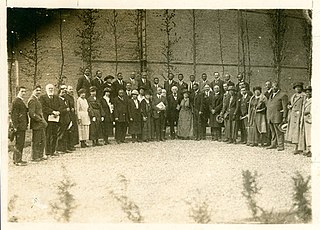
The Pan-African Congress (PAC) was a series of eight meetings which took place on the back of the Pan-African Conference held in London in 1900. The Pan-African Congress gained a reputation as a peacemaker for decolonization in Africa and in the West Indies. It made a significant advance for the Pan-African cause. One of the group's major demands was to end colonial rule and racial discrimination. It stood against imperialism and it demanded human rights and equality of economic opportunity. The manifesto given by the Pan-African Congress included the political and economic demands of the Congress for a new world context of international cooperation and the need to address the issues facing Africa as a result of European colonization of most of the continent.
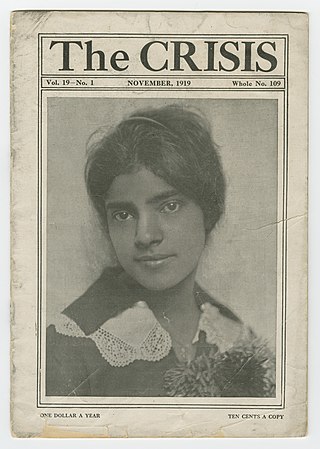
The Crisis is the official magazine of the National Association for the Advancement of Colored People (NAACP). It was founded in 1910 by W. E. B. Du Bois (editor), Oswald Garrison Villard, J. Max Barber, Charles Edward Russell, Kelly Miller, William Stanley Braithwaite, and Mary Dunlop Maclean. The Crisis has been in continuous print since 1910, and it is the oldest Black-oriented magazine in the world. Today, The Crisis is "a quarterly journal of civil rights, history, politics and culture and seeks to educate and challenge its readers about issues that continue to plague African Americans and other communities of color."

Herbert Aptheker was an American Marxist historian and political activist. He wrote more than 50 books, mostly in the fields of African-American history and general U.S. history, most notably, American Negro Slave Revolts (1943), a classic in the field. He also compiled the 7-volume Documentary History of the Negro People (1951–1994). In addition, he compiled a wide variety of primary documents supporting study of African-American history. He was the literary executor for W. E. B. Du Bois.

Hubert Henry Harrison was a West Indian-American writer, orator, educator, critic, race and class conscious political activist, and radical internationalist based in Harlem, New York. He was described by activist A. Philip Randolph as "the father of Harlem radicalism" and by the historian Joel Augustus Rogers as "the foremost Afro-American intellect of his time." John G. Jackson of American Atheists described him as "The Black Socrates".
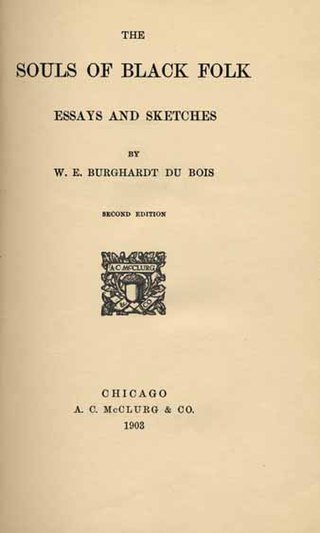
The Souls of Black Folk: Essays and Sketches is a 1903 work of American literature by W. E. B. Du Bois. It is a seminal work in the history of sociology and a cornerstone of African-American literature.

"New Negro" is a term popularized during the Harlem Renaissance implying a more outspoken advocacy of dignity and a refusal to submit quietly to the practices and laws of Jim Crow racial segregation. The term "New Negro" was made popular by Alain LeRoy Locke in his anthology The New Negro.

"Wade in the Water" is an African American jubilee song, a spiritual—in reference to a genre of music "created and first sung by African Americans in slavery." The lyrics to "Wade in the Water" were first co-published in 1901 in New Jubilee Songs as Sung by the Fisk Jubilee Singers by Frederick J. Work and his brother, John Wesley Work Jr., an educator at the historically black college in Nashville, Tennessee, Fisk University. Work Jr. (1871–1925)—who is also known as John Work II—spent thirty years collecting, promoting, and reviving the songcraft of the original Fisk Jubilee Singers, which included being a member and director of the Fisk Jubilee Quartet. The Sunset Four Jubilee Singers made the first commercial recording of "Wade in the Water" in 1925—released by Paramount Records. W. E. B. Du Bois called this genre of songs the Sorrow Songs. "Wade in the Water" is associated with songs of the Underground Railroad.
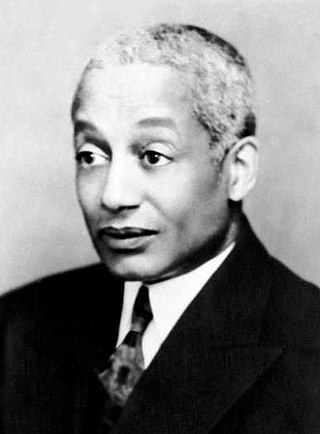
Alain LeRoy Locke was an American writer, philosopher, and educator. Distinguished in 1907 as the first African-American Rhodes Scholar, Locke became known as the philosophical architect—the acknowledged "Dean"—of the Harlem Renaissance. He is frequently included in listings of influential African Americans. On March 19, 1968, the Rev. Dr. Martin Luther King Jr. proclaimed: "We're going to let our children know that the only philosophers that lived were not Plato and Aristotle, but W. E. B. Du Bois and Alain Locke came through the universe."
Afrocentric education refers to a pedagogical approach to education designed to empower people of the African diaspora with educational modes in contact and in line with the cultural assumptions common in their communities. A central premise behind it is that many Africans have been subjugated by having their awareness of themselves limited and by being indoctrinated with ideas that work against them and their cultures.
What came to be known as the Atlanta Compromise stemmed from a speech given by Booker T. Washington, president of the Tuskegee Institute, to the Cotton States and International Exposition in Atlanta, Georgia, on September 18, 1895. It was first supported and later opposed by W. E. B. Du Bois and other African-American leaders.
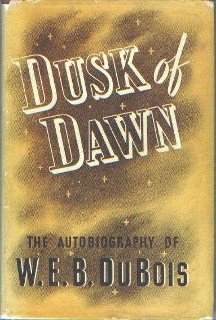
Dusk of Dawn: An Essay Toward an Autobiography of a Race Concept is a 1940 autobiographical text by W. E. B. Du Bois that examines his life and family history in the context of contemporaneous developments in race relations.
The Ethiopian Art Theatre — originally called the Chicago Folk Theatre, later the Colored Folk Theatre, also referred to as The Ethiopian Art Players — was an African American theatre company based out of Chicago, Illinois. The company was an influential albeit short-lived (1922/1923–1925) group founded during the Harlem Renaissance. There are differing views over the precise year that the company was founded, 1922 or 1923. The founder was Raymond O'Neil, a white theatre director, and its principal sponsor was Mrs. Sherwood Anderson, also white; though all its performers were African American. The organization was unique and controversial during its era, primarily for being one of the few African American Theatre Companies to perform European theatrical works, but also, among other things, for producing theatrical works of African American playwrights for both African American and Non-African American audiences.
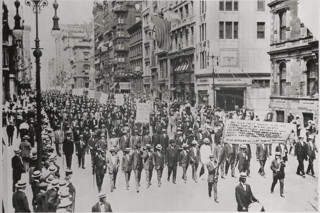
The Negro Silent Protest Parade, commonly known as the Silent Parade, was a silent march of about 10,000 African Americans along Fifth Avenue starting at 57th Street in New York City on July 28, 1917. The event was organized by the NAACP, church, and community leaders to protest violence directed towards African Americans, such as recent lynchings in Waco and Memphis. The parade was precipitated by the East St. Louis riots in May and July 1917 where at least 40 black people were killed by white mobs, in part touched off by a labor dispute where blacks were used for strike breaking.

May Howard Jackson was an African American sculptor and artist. Active in the New Negro Movement and prominent in Washington, D.C.'s African American intellectual circle in the period 1910–30, she was known as "one of the first black sculptors to...deliberately use America's racial problems" as the theme of her art. Her dignified portrayals of "mulatto" individuals as well as her own struggles with her multiracial identity continue to call for the interpretation and assessment of her work.

George W. Forbes (1864-1927) was an American journalist who advocated for African-American civil rights in the late 19th and early 20th centuries. He is best known for co-founding the Boston Guardian, an African-American newspaper in which he and William Monroe Trotter published editorials excoriating Booker T. Washington for his accommodationist approach to race relations. He also founded and edited the Boston Courant, one of Boston's earliest black newspapers, and edited the A. M. E. Church Review, a national publication.
Racial uplift is a term within the African-American community that motivates educated blacks to be responsible in the lifting of their race. This concept traced back to the late 1800s, introduced by black elites, such as W. E. B. Du Bois, Booker T. Washington, and African-American musicians like Florence Price, who were significant contributors. During the beginnings of racial uplift, hymns and negro spirituals played a vital role in shaping the spiritual culture of African Americans. Although these musical selections are mainly prevalent inside the black church, contemporary gospel music has been utilized for the liberation and uplift of the oppressed black race. Aside from music, African-American leaders have used concepts such as Du Bois's double consciousness that describe the idea of blackness and the complexities of identity in the various lens in which the black race envisions themselves in American society.
Dora Cole Norman was an African-American educator, dancer, theater producer, playwright and sportswoman. As a young woman she played basketball for one of the first African-American women's basketball teams, the New York Girls. She taught for the New York Public School System and was the founder-director of the Colored Players Guild at the Harlem YWCA. She collaborated with W. E. B. Dubois on the 1913 production of his historical pageant The Star of Ethiopia, and gave Paul Robeson his first acting roles in the early 1920s.
















